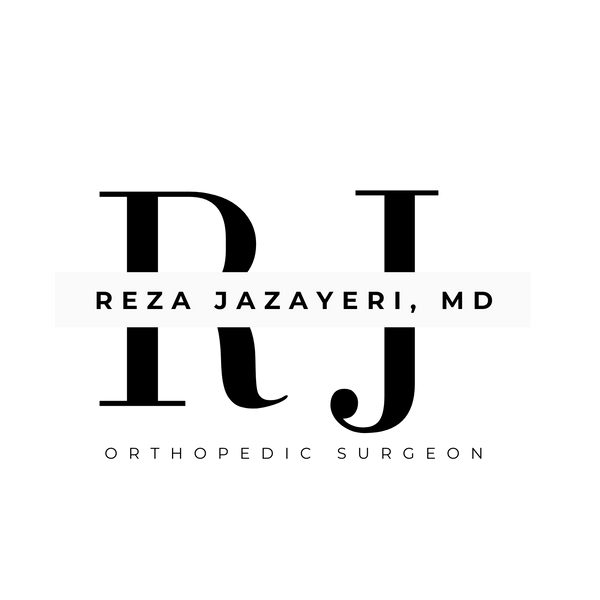
Bio-Enhanced Pectoralis Major Tendon Reconstruction: Optimizing Recovery with Precision Surgical Techniques and Biologic Innovation
Share
Author: Dr. Reza Jazayeri
For athletes, bodybuilders, and active individuals, a torn pectoralis major tendon can be a devastating injury, impacting performance, strength, and quality of life. Dr. Jazayeri offers a cutting-edge solution for this complex injury: Bio-Enhanced Pec Tendon Reconstruction, an advanced approach that merges biomechanical innovation with biologic augmentation and personalized rehabilitation for optimal outcomes.
What Sets Bio-Enhanced Pec Reconstruction Apart?
Unlike traditional repairs, this technique combines the strongest available surgical reconstruction methods with progressive biologic and nutritional strategies, designed to accelerate recovery, promote tendon-to-bone healing, and support a full return to sport.
Structurally Robust Repair: Biomechanics That Matter
Dr. Jazayeri uses unicortical button fixation with high-strength suture tape, a construct shown to offer superior biomechanical strength and controlled load distribution. This technique provides the most stable repair constructs available and has demonstrated excellent performance in biomechanical studies, with the durability needed to support early rehabilitation protocols.
In most cases of pectoralis major rupture, the torn tendon is thin and frayed, leaving minimal healthy tissue available for direct repair. This presents a significant challenge, requiring a strong, durable reconstruction to ensure long-term success.
To overcome this, Dr. Jazayeri incorporates acellular dermal matrix (ADM) and internal brace (IB) augmentation, providing two key benefits:
Biomechanical Strength: The ADM + IB construct has been shown in studies to possess failure loads that exceed even those of the native tendon, offering immediate reinforcement to the repair.

Biologic Scaffold:
ADM serves not only as a structural reinforcement but also as a biological scaffold, supporting cellular infiltration, neovascularization, and tissue remodeling.
This combination restores structural integrity while creating a supportive environment for tissue healing, critical in cases with poor-quality or minimal remaining tendon.
Biologic-Regenerative Enhancement with Orthobiologics:
In addition to mechanical reinforcement, Dr. Jazayeri enhances the repair site biologically using orthobiologics such as Platelet-Rich Plasma (PRP) or Bone Marrow Aspirate Concentrate (BMAC).
-
PRP delivers a high concentration of growth factors that stimulate cellular signaling, reduce inflammation, and support early healing.
- BMAC contains mesenchymal stem cells and progenitor cells that contribute to tissue regeneration and improved tendon integration.
These biologics are applied directly to the scaffold of the Acellular Dermal Matrix (ADM), creating a biologically active interface that promotes tendon-to-bone healing in even the most compromised tissue beds.
This dual approach, ADM for structural and scaffold support, and PRP or BMAC for regenerative stimulation, provides an optimized environment for recovery. Dr. Jazayeri will review all options with you in a shared decision-making process to develop a personalized treatment plan tailored to your goals and tissue condition.
Personalized Recovery:
Nutrition and Rehabilitation Recovery doesn’t stop in the OR. Each patient is guided through a personalized, science-driven protocol that addresses the full spectrum of healing, from cellular repair to functional return.
- Customized Dietary Planning to support muscle preservation, reduce inflammation, and promote collagen synthesis during the critical early healing phases.
- Targeted Amino Acid Supplementation to blunt catabolism, enhance protein synthesis, and accelerate tendon and muscle repair.
Metabolic and Hormonal Evaluation:
A comprehensive laboratory workup assesses nutritional status, hormonal balance, and metabolic health. Optimization of these markers is an integral part of the protocol to create an internal environment conducive to efficient healing and superior outcomes.
Tailored Physical Therapy based on the type and location of the tear (e.g., musculotendinous vs. tendon insertion), with a controlled progression that protects the repair while restoring motion, strength, and performance.
This multidisciplinary, patient-specific recovery strategy is designed to restore not just function, but full readiness for sport and active life.
Why Choose Dr. Jazayeri?
With decades of experience in complex tendon reconstruction, Dr. Reza Jazayeri combines precision surgical technique, biologic innovation, and athlete-focused care. His approach recognizes that most pectoralis ruptures are not simple tears, they are structurally and biologically compromised injuries that require a multi-dimensional solution.
“When there’s minimal native tissue left, we don’t just repair, we rebuild. We restore strength, structure, and healing potential so patients can return not just to sport, but to peak performance.”
Research References:
- Patrick Waldron, Ethan Vallellanes, Lucas Voyvodic, Sydney Solis, Ravleen Kang, Arina Caliman, Isabella Navarro, James L. Chen, Ajith Malige, Primary Pectoralis Major Tendon Repair Using Suture Anchors With Internal Bracing: A Surgical Technique, Arthroscopy Techniques, Volume 14, Issue 5
- Acellular dermal matrix augmentation significantly increases ultimate load to failure of pectoralis major tendon repair: a biomechanical study Mirzayan, Raffy et al. Journal of Shoulder and Elbow Surgery, Volume 29, Issue 4, 728 - 735
- Saito RR, Panwar KS, Huish EG. Biomechanical comparison of pectoralis major repair techniques: A systematic review and meta-regression. Shoulder & Elbow. 2023;16(2):145-151. doi:10.1177/17585732231152251
